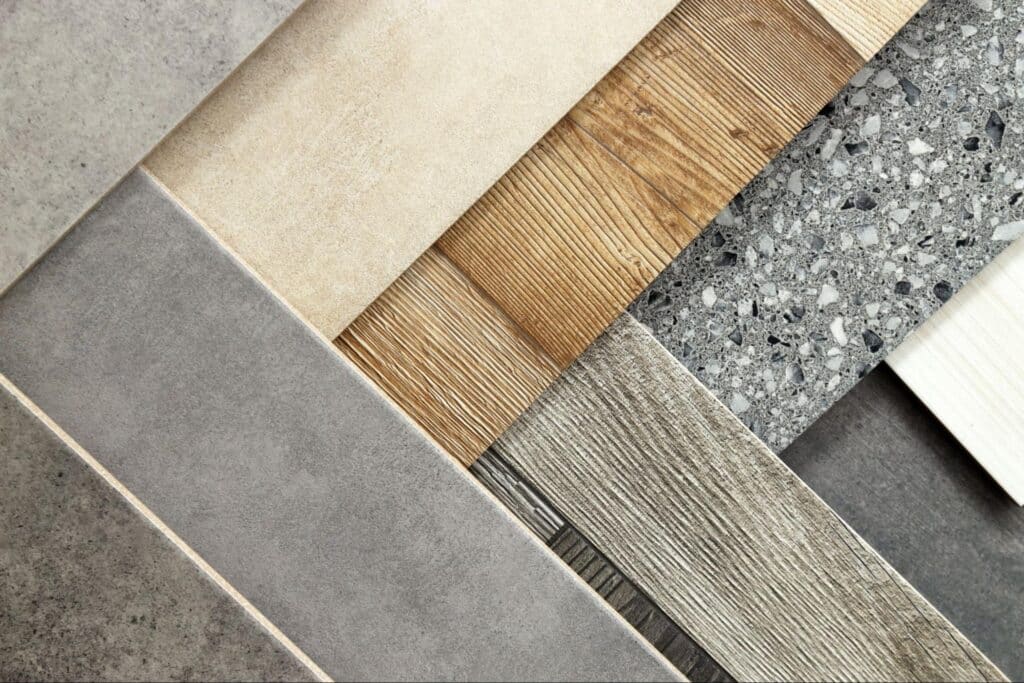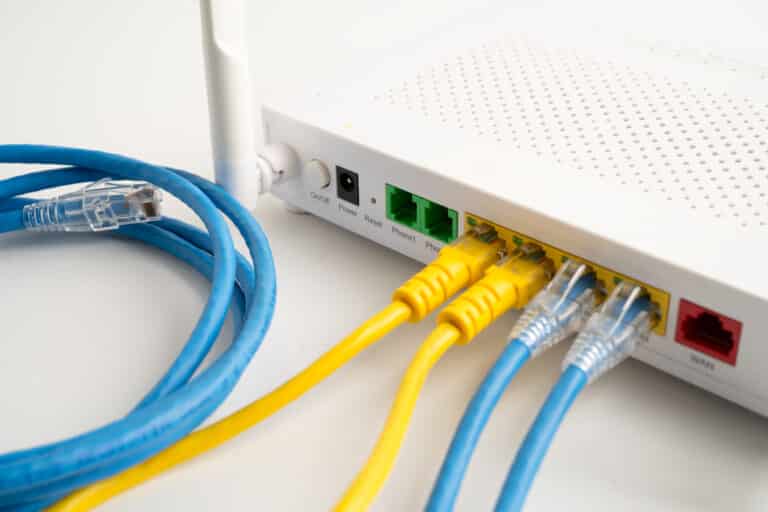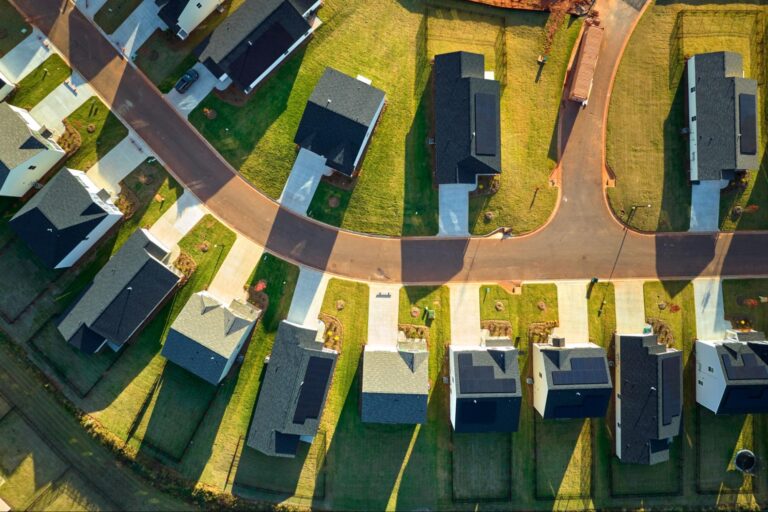When planning your new construction home, few decisions are as impactful as selecting the right flooring. Far more than just a surface to walk on, flooring plays a crucial role in shaping the style, functionality, and overall comfort of your living spaces. It not only influences the ambiance of each room but also contributes to long-term durability and property value. With so many options available—from classic hardwood to versatile luxury vinyl—it’s easy to feel overwhelmed. Where do you even begin?
This comprehensive flooring guide will simplify the process by breaking down essential factors such as budget, lifestyle considerations, and room-specific needs. You’ll gain insights into the pros and cons of common flooring types, learn about exciting new trends, and understand the importance of aligning your flooring choices with your home’s design. Whether you envision sleek, modern finishes or cozy, traditional designs, the right flooring can help bring your dream home to life. Let’s walk through key steps and considerations to help you make confident, informed decisions for your new construction home.
Key Considerations for Selecting the Right Flooring
Selecting the perfect flooring for your new construction home involves more than just picking a material you love. It’s about ensuring it aligns with your lifestyle, budget, and practical needs. Below are four essential factors to help you make a well-rounded decision.
Budget Factors
Budget is a key starting point when deciding on flooring. High-end materials, such as solid hardwood or premium tiles, can be costlier initially but often deliver lasting value. More affordable choices like laminate or vinyl are easier on your wallet upfront, though they might require replacement or updates sooner.
Additionally, factor in the expenses beyond the price per square foot. These may include installation, underlayment, surface preparation, and ongoing maintenance requirements. Weigh both short-term and long-term costs to find an option that supports your financial goals.
Lifestyle Requirements
Your household’s daily activities also shape flooring choices. If you have children or entertain often, pick materials that can handle spills, scuffs, and foot traffic—like scratch-resistant laminate or vinyl. Households with pets might look for pet-friendly flooring that resists scratches and odors. For spaces dedicated to relaxation, such as bedrooms, softer surfaces like carpet can help create a warm, inviting atmosphere.
Room-Specific Functionality
Every room comes with unique demands. Bathrooms and laundry rooms frequently encounter humidity, making waterproof vinyl options or tile good fits. Kitchens, prone to spills and heavy traffic, benefit from tough materials like tile or hardwood with a protective finish. Bedrooms and living rooms often prioritize comfort, where carpeting or engineered hardwood flooring can shine.
Maintenance Expectations
Consider how much time and effort you want to invest in upkeep. Hardwood flooring, for instance, may require refinishing, while stone or certain tiles need periodic sealing. Meanwhile, laminate, vinyl, or tile demand less regular maintenance. Choose floors that complement your routine and keep stress to a minimum.
Detailed Overview of Common Flooring Options
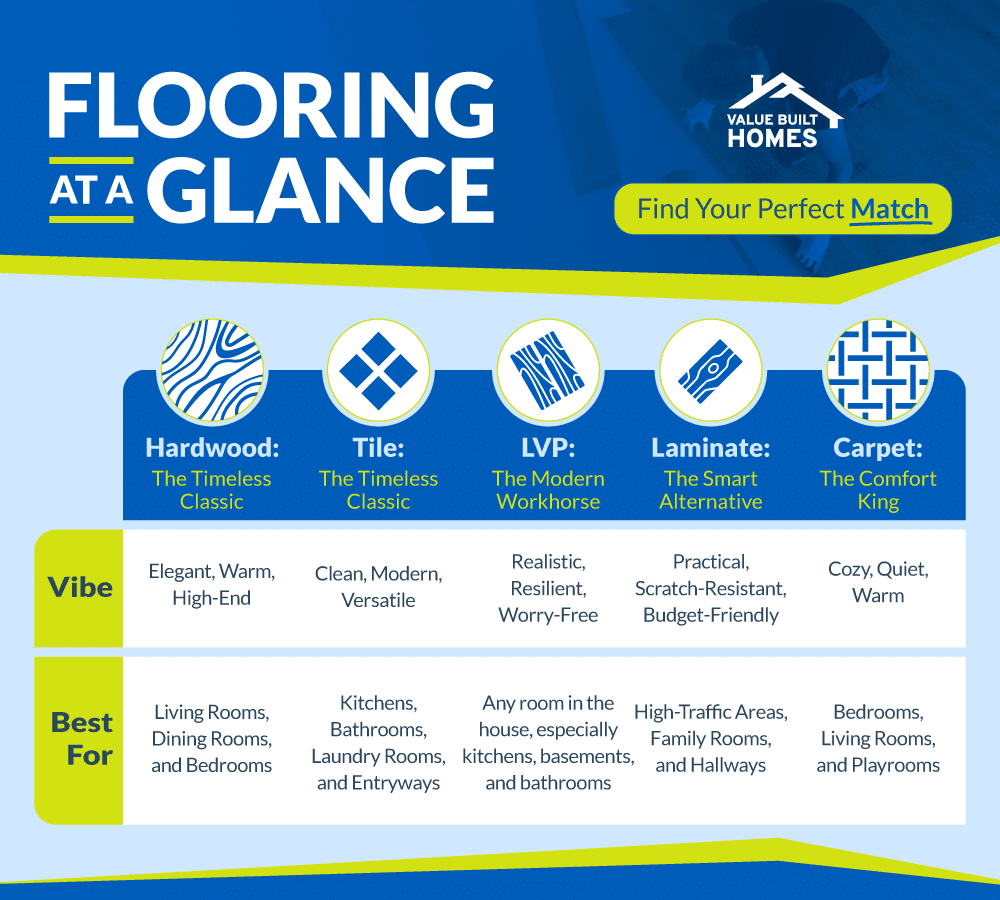
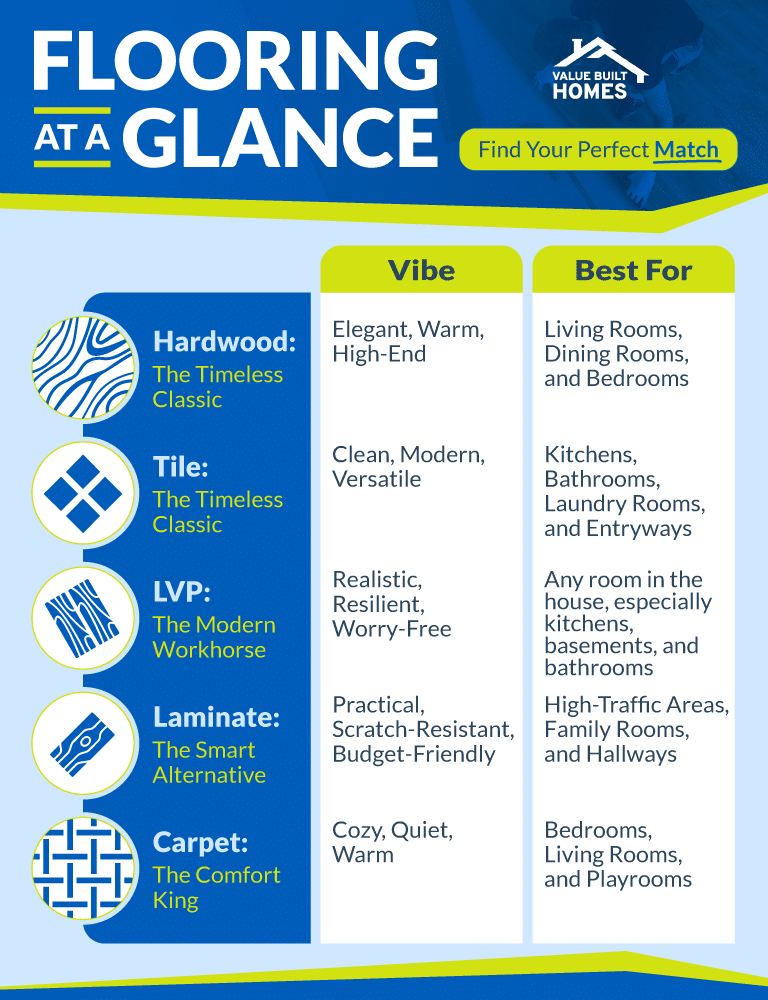
Understanding the pros and cons of different materials is crucial for finding the right fit for your lifestyle, budget, and regional climate. Below is a detailed overview of popular flooring options, incorporating their general characteristics and specific weather-resistance factors.
Hardwood Flooring
A timeless classic, hardwood flooring brings warmth and elegance to any home. Its benefits include a long lifespan, the potential to be refinished to remove scratches, and an increase in home value. However, its primary drawback is its vulnerability to moisture and humidity. Solid hardwood can expand and contract with changing climate conditions, so it is essential to maintain stable humidity levels in your home. For greater stability against these changes, consider engineered hardwood.
Tile Flooring
Durable, stain-resistant, and available in a vast range of styles from sleek modern to rustic textured, tile is a logical choice for rooms exposed to spills or humidity, such as kitchens and bathrooms. Materials like ceramic and porcelain are exceptionally resilient, handling temperature extremes well. The main drawbacks are that tile feels hard and cold underfoot, can be slippery when wet, and requires grout maintenance. The cold feel, especially in winter, can be mitigated with area rugs or underfloor heating systems.
Laminate Flooring
Laminate flooring offers the look of wood at a lower price point, making it a cost-effective alternative. It is known for its scratch-resistant surface and simpler, DIY-friendly installation. The primary disadvantages are that it cannot be refinished once damaged and its susceptibility to moisture. While more resistant than some natural materials, lower-quality laminate can still react to humidity. To ensure longevity, choose high-grade, water-resistant laminate and ensure proper underlayment is used during installation.
Vinyl and Luxury Vinyl Plank (LVP)
Once considered a strictly budget option, vinyl—and especially luxury vinyl plank (LVP)—now rivals more expensive materials in both appearance and performance. Its key benefits are that it is waterproof, affordable, low-maintenance, and available in countless patterns. This water and temperature resilience makes it a versatile and practical choice for variable climates. Compared to tile, LVP also provides better insulation against the cold, offering a warmer feel underfoot. Drawbacks include having less prestige than natural hardwood, and some lower-end products may fade over time.
Carpet
Ideal for bedrooms and living areas where comfort is a priority, Carpet creates a cozy ambiance. It provides exceptional warmth, cushioning, and sound insulation, making it perfect for cold winters. However, carpet tends to absorb stains and odors and is not suitable for wet environments. It can be prone to mold in humid months, so opting for a moisture-resistant underlay is crucial. It may also wear more quickly in high-traffic zones.
Tips for Selecting and Maintaining Your Flooring
By considering the following factors, homeowners can choose flooring that is not only visually appealing but also practical and enduring in the face of climate challenges.
- Ensure Consistent Moisture Control: Invest in dehumidifiers for humid summer months and humidifiers for dry winters to stabilize your home’s environment and protect your floors.
- Opt for Professional Installation: A skilled installer can optimize underlayment and finishes to reduce the negative impacts of weather on your flooring.
- Perform Regular Maintenance: Adhere to a routine maintenance schedule customized to your flooring type to counteract seasonal wear and tear and preserve its longevity.
Color and Design Trends in Flooring
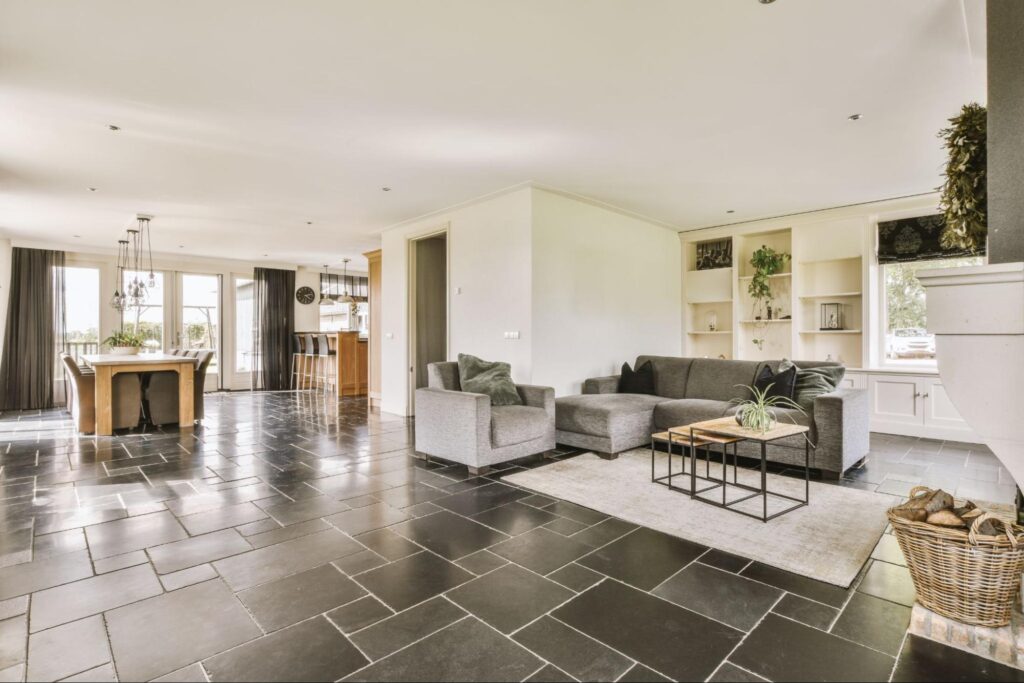
Keeping up with current and emerging flooring design trends helps ensure your home remains stylish and modern, enhancing both personal satisfaction and resale value. Here are some of the prominent trends in color and design for flooring:
Current Color Trends
- Neutral Palettes:
- Dominating modern interior design, neutral tones like grays, beiges, and whites provide a versatile backdrop that complements a wide range of decors.
- These colors create a calming ambiance and are easy to update with colorful accessories or furnishing for a fresh look.
- Warm Earthy Tones:
- Shades like soft browns, terracotta, and olive greens are gaining popularity as they bring warmth and a touch of nature indoors.
- Earthy tones create a cozy atmosphere that aligns with a more sustainable and organic aesthetic.
- Dark and Dramatic:
- Deep hues such as charcoal, espresso, and navy are increasingly favored for their elegance and ability to add depth to a room.
- These colors pair well with light and bright contrasting elements, creating a sophisticated look.
Emerging Design Patterns and Styles
- Wide Plank Flooring:
- Larger planks in hardwood and laminate are trending for their ability to create a sense of space and luxury.
- This design can make rooms appear more expansive and less busy.
- Herringbone and Chevron Patterns:
- Timeless and visually captivating, these patterns add dynamic movement to spaces, perfect for making a statement in both modern and traditional homes.
- Mixed-Width Planks:
- Using planks of various widths creates visual interest and can transform a simple floor into something unique and personalized.
- Ideal for achieving a rustic or handcrafted appearance.
- Textured Finishes:
- Trends are shifting towards textures that bring tactile richness and character, such as wire-brushed, hand-scraped, and distressed surfaces.
- These finishes not only hide minor imperfections but also add depth and interest to the flooring.
- Matte Finishes:
- Matte finishes are popular for their understated elegance and ability to hide smudges and dust better than glossy finishes.
- They work well in high-traffic areas and pair beautifully with most interior styles.
Tips for Incorporating Trends
- Balance Bold Choices with Neutral Bases: Keep larger, permanent elements like flooring neutral, while introducing bold colors through paint, rugs, or decor, allowing easier updates over time.
- Consider Longevity: Opt for trends that align with your long-term vision for the home, ensuring stability in style and functionality.
- Blend Traditional with Modern: Combining several styles or eras can maintain a contemporary edge while preserving classic elements that ensure timeless appeal.
By integrating these color and design trends thoughtfully, homeowners can ensure their interiors not only reflect personal taste but also enhance their home’s aesthetic value and market competitiveness.
Innovations in Flooring
Although flooring principles remain consistent, new technologies and environmental priorities continue to reshape the market.
Eco-Friendly and Sustainable Flooring Options
As sustainability gains importance, homeowners are turning to eco-friendly flooring. Materials like bamboo flooring and cork offer renewable alternatives to traditional hardwoods. Recycled flooring blends can also reduce waste and add distinctive design elements.
Waterproof and Durability Advancements
Improved manufacturing techniques have led to better finishes and water resistance in wood, laminate, and vinyl. These innovations minimize warping, staining, and scuffing, making high-traffic and high-moisture areas less of a concern.
High-Tech and Smart Flooring Solutions
Flooring integrated with radiant heating systems delivers warmth and energy efficiency. Emerging sensor-equipped materials even track foot traffic and temperature shifts, merging comfort with innovation.
Multi-Functional Flooring Styles
If you’re furnishing multipurpose areas, multi-functional flooring options like resilient tile or engineered vinyl can handle diverse needs. These solutions balance style, safety, and durability under a range of uses.
Your Foundation for a Beautiful Home
Selecting the right flooring is a pivotal step in your new home construction, influencing style, comfort, and functionality for years to come. By evaluating factors like your budget, lifestyle, and Indiana’s unique climate, you can confidently choose between the timeless elegance of hardwood, the durable resilience of tile, the cozy warmth of carpet, or the modern versatility of vinyl and laminate.
While this research is empowering, we recognize that navigating countless options can be overwhelming. At Value Built Homes, our expertise turns this complex decision into an exciting and stress-free part of your homebuilding journey. Our team is deeply familiar with Indiana’s environmental conditions and will guide you through curated flooring solutions designed to handle fluctuations in temperature, humidity, and the demands of everyday life in the Midwest. We ensure your floors don’t just look great—they last.
Ready to build your new home on a foundation of quality and expert guidance? Contact Value Built Homes today to learn how our simplified selection process can help you choose the perfect flooring for your lifestyle.

